 |
 |
 |
| |
Immunophenotypic and T-cell Senescence Profile Modifications After Spontaneous HCV Clearance or After DAAs Treatment in People Living with HIV
|
| |
| |
CROi 2024 March 3-6 Denver
Camille Jacqueline Forget1,2, Violeta Lara-Aguilar1, Manuel Llamas-Adan1, Cristina Gonzalez-Díaz1, Sergio Grande-García1, Celia Crespo-Bermejo1, Sonia Arca-Lafuente1, Luz Martín-Carbonero3,5, Pablo Ryan4,5, Ignacio de los Santos5,6, Verónica Briz1* PhD, Amanda Fernandez-Rodríguez1,5,* PhD on behalf of the Multidisciplinary HIV/Hepatitis Viral Coinfection Group (COVIHEP).clear="all" />
1Nacional Center of Microbiology, Institute of Health Carlos III, Majadahonda, Spain. 2European Public Health Microbiology Training Programme (EUPHEM), European Centre for Disease Prevention and Control (ECDC), Stockholm, Sweden. 3Internal Medicine Service. La Paz University Hospital (IdiPAZ), 28046, Madrid, Spain. 4Department of Infectious Diseases. HIV/Hepatitis Internal Medicine Service. Infanta Leonor University Hospital, 28031, Madrid, Espana. 5 Centro de Investigación Biomédica en Red de Enfermedades Infecciosas (CIBERINFEC), Institute of Health Carlos III, Madrid. Spain. 6Internal Medicine - Infectious Diseases Service. La Princesa University Hospital, 28006, Madrid, Espana
Clearance with DAAs after chronic HCV infection improved cellular senescence profile but remained higher than controls. The slightly higher levels of circulating immunosenescence markers after 1-year follow-up in the AE group may indicate possible accelerated aging driven by acute HCV infection.
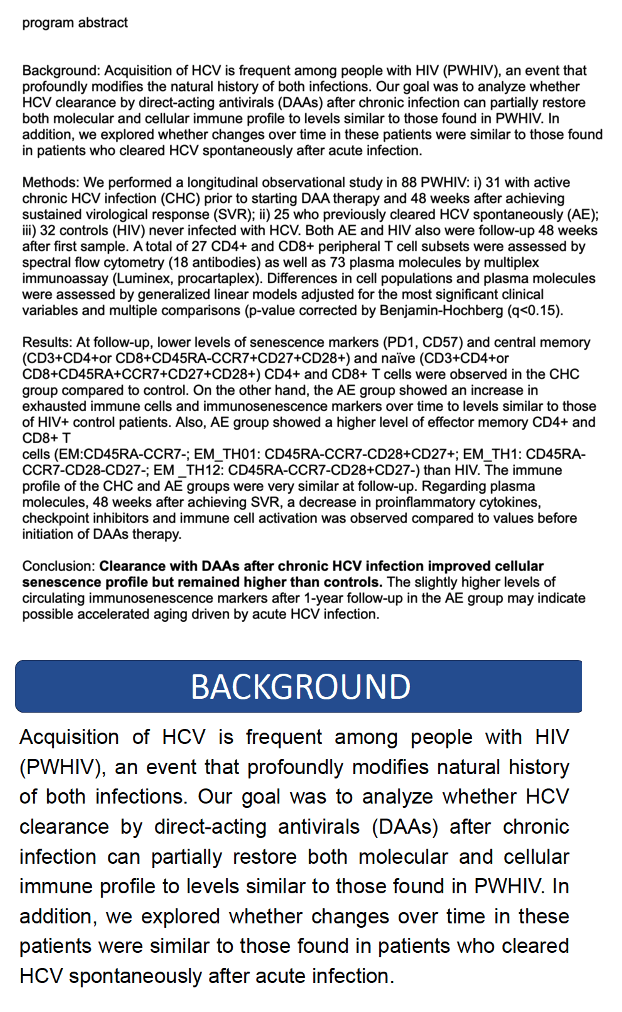
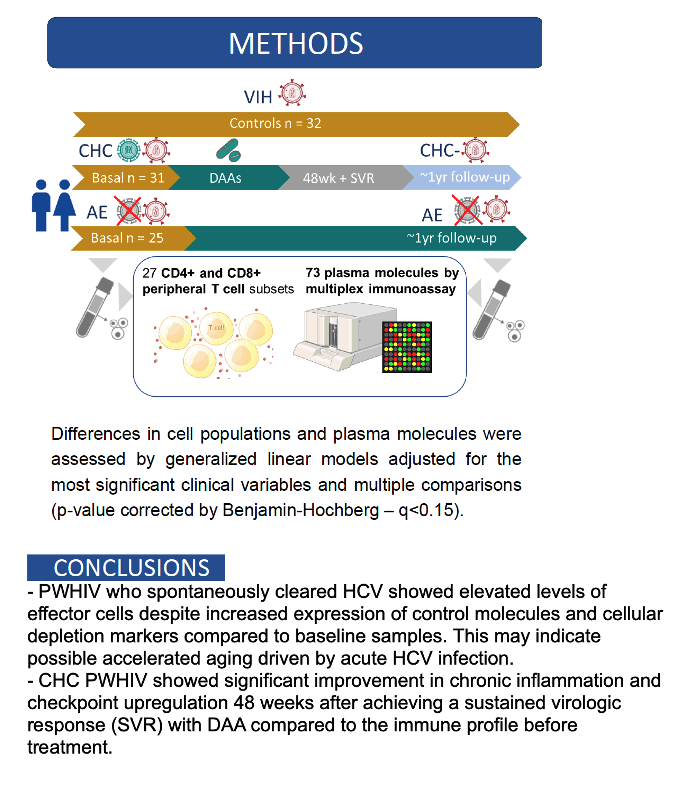
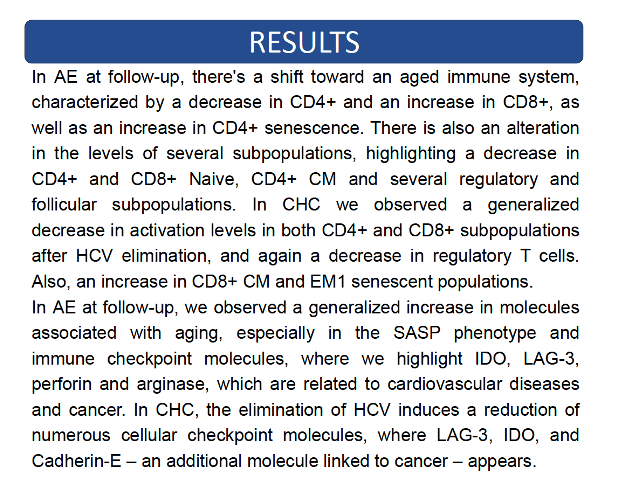
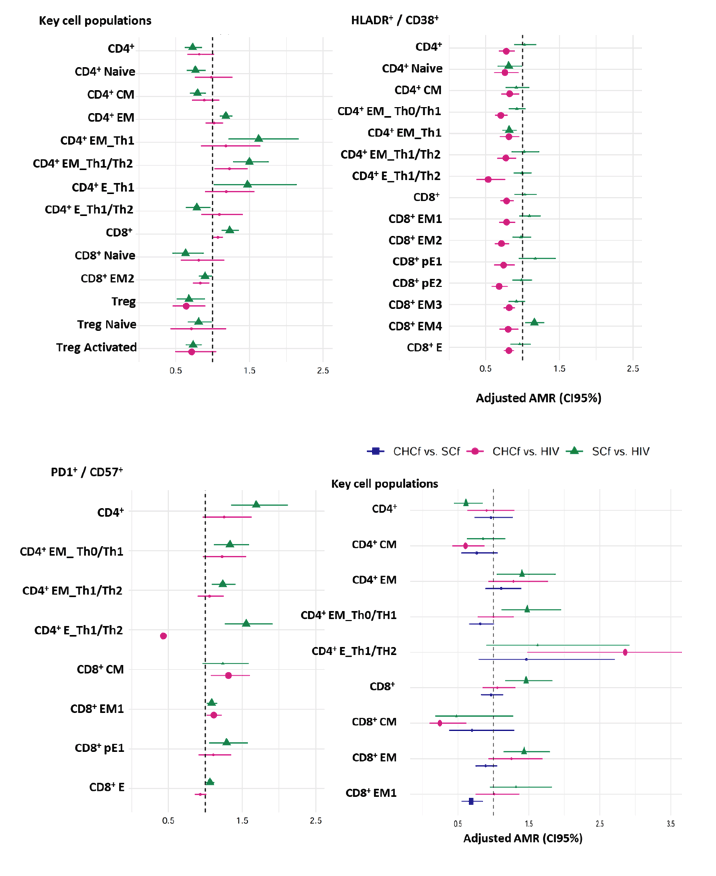
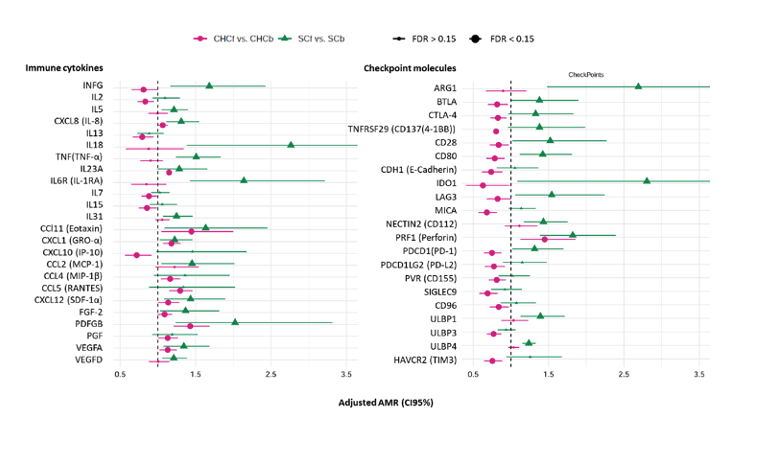
|
| |
|
 |
 |
|
|